While the human Seven Deadly Sins – lust, gluttony, greed, sloth, wrath, envy and pride – clearly play a part in any automaker’s fall from grace, Detroit cultivated its own favorite deadly transgressions. Chrysler’s recurring dirty little habit was premature ejection: spurting cars out of the factory door well before they were ready.
The shoddily built 1957s devastated the company’s hard earned rep for solid, well-engineered cars. The 1960 Valiant suffered from similar if not such an extreme violation. Chrysler only barely absolved itself through the penance of hard work along with the (eventual) blessing of the sacred A-Body (Valiant and Dart). But in 1976, Chrysler fell from grace again, and this time it took the intercession of the Great White Father in Washington to keep it from eternal damnation. And not for the last time, either.
It’s hard to overstate the importance of the A-Bodies to Chrysler’s survival during its difficult years. The Valiant and Dart, along with their Swinging Duster off-shoots, developed a well-earned reputation for rugged simplicity. And they sold like stink. In fact, contrary to usual Detroit-think, they sold better the older they got. In 1974, in their fifteenth year, some 720k new A-Bodies found homes. And I’ll bet that the percentage of them still on the road today is the highest of any American car sold that year. There’s still a number of them still on the streets of Eugene, like this yellow 1974 Valiant that lives a few blocks from my house.
Chrysler must have known that replacing the A-team successfully would be a mission-critical task. Boy, did they ever flub it. Their compacts went from being the most durable to the most-recalled in history, up to that time; GM’s X-bodies soon stole that title. It was 1957 all over again, but worse. At least Chrysler had the foresight to call them “F-Bodies”. From an A to an F, without any intermediate stops; what a fail.
Beta-testing new cars on a mass scale is just not a good idea. Build quality was all-round crappy, at best. It went downhill from there: five mandatory recalls covering a variety of ills with suspension, ignition, fuel system, brakes, steering and body. The one that had the highest visibility (literally) was pre-mature rusting of the front fenders. All Aspares had fenders inspected, removed, replaced and/or galvanized, and repainted to the tune of $109 million. That was serious bucks to Chrysler then, especially since the whole mothership was rusting away.
Lee Iacocca had this to say: “The Dart and Valiant ran forever, and they should never have been dropped. Instead they were replaced by cars that often started to come apart after only a year or two. When these cars first came out, they were still in the development phase. Looking back over the past twenty years or so, I can’t think of any cars that caused more disappointment among customers than the Aspen and the Volare”. Honest, but easy for him to say, since he wasn’t responsible.
Ever since losing the #2 spot in the US after WW2, Chrysler’s financial position and its vulnerability to downswings increased substantially. Their 1957 quality woes as well as the collapse of the large car market in 1958 led to massive losses, wide-spread layoffs of white collar workers, killing their ambitious new 1962 large program and retrenching with lower cost (and somewhat smaller) models.
But under the pragmatic guidance of newly-installed President Lynn Townsend, Chrysler recovered in the mid-late ’60s. But they were significantly smaller than GM and Ford and much more vulnerable to market swings like the energy crisis of 1974 as well as to self-inflicted wounds like these F-bodies.
By 1980, the delayed but full impact of the pre-mature twins was obvious; sales were down to under 200k per year. And sales of the Volens’ direct replacement, the Reliant and Aries K-cars, never topped 300k. The A-car franchise was now a distant and painful memory, and materially contributed to the Pentastar’s collapse.
Chrysler barely avoided bankruptcy in 1979 thanks to federal loan guarantees, and went on to fly high again. But it wasn’t the last time its pet sin was committed (think Neon). Meanwhile Volare and Aspen soldiered on a few more years, before they morphed into the dull M-Bodies: Diplomat, LeBaron, Grand Fury, New Yorker, and that final supreme devolution, the Fifth Avenue, which doddered along until 1989. Does it only seem like that was yesterday?
Can we find something a little positive to say here? Sure; the original incarnations were the best looking, before all the neo-classic grilles and half-vinyl tops. The Volare and Aspen were an attempt to redefine the intermediate size car, since the abominations that had once been called that swelled to ridiculous proportions in the mid seventies.
Quality started to improved after the first year; within a couple of years it was back to more usual Chrysler standards: mostly reliable but still uneven assembly quality and on-going issues with certain design/engineering aspects of the F-body, such as its transverse torsion bar front suspension that was simply not as rugged as the original design as used in the A-Body and other Chryslers. And more complex emission and related systems were also inherently more problematic. The F Body was never going to be as bullet-proof as its predecessors.
The station wagon in particular exemplified the best qualities of that effort: clean, practical, handsome, almost Volvo-esque.
The coupe: somewhat less so. Its styling just didn’t ever ignite any excitement or enthusiasm.
Ignoring the driveability/smog control/Lean Burn issues that were common to the era, Chrysler’s engines and transmissions were a well-known quantity. You could even order a Super Six, a two-barrel version of the slant six which put out as much power as some of the Chevy small blocks of that illustrious lo-po era. With a floor-shifted four speed (3 speed and O/D) to back it up, it was about as euro as Detroit got back then.
Ride and handling were decidedly anti-euro: softer. The A-Bodies were generally the best handling domestic compacts, at the expense of refinement in ride and quietness. The Volare and Aspen introduced a new transverse torsion-bar front suspension, with greater isolation, and the result was just that. Chrysler was trying to imitate Ford’s popular soft-rider Granada, and it succeeded spectacularly.
Just as the impact of the Volare and Aspen’s fall from grace hit, along came the 1978 Ford Fairmont and pretty much did it all better. The original Fox body was lighter, cleaner, crisper and more efficient; the closest Detroit ever got to the old Falcon or Volvo formula. But of course it too soon morphed into padded vinyl-topped mini-Lincolns. As well as the real thing.
Probably the best thing Chrysler did with the Volare and Aspen was their names. By changing their body designation from “A” to “F”, and by not naming them Valiant and Dart, they at least avoided dragging those names through the mud. Now that sin would have been unforgivable.
Note: This is a revised new version of a post from 2011. The original and its comments can be found here.
Related CC reading:
Curbside Classic: 1978 Dodge Aspen Wagon – Defying Expectations Since the Carter Administration J. Shafer
Curbside Classic: 1980 Dodge Aspen – Rock Bottom And Loving It Perry Shoar
COAL – The Cars Of My Childhood 1 – 1977 Dodge Aspen SE Gene Liu
Vintage R&T Review: 1976 Plymouth Volare Wagon
Junkyard Classic: 1977 Plymouth Volaré Coupe – The Question Is How Did This Last 42 years in the Wild? Jim Klein
Brilliant Blunder: 1962 Plymouth & Dodge – The Real Reason They Were Downsized PN














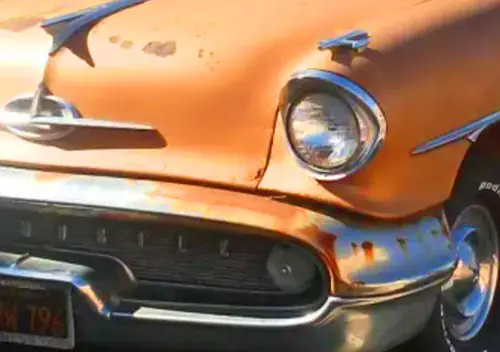
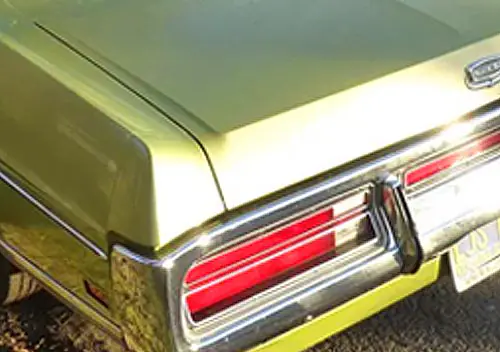
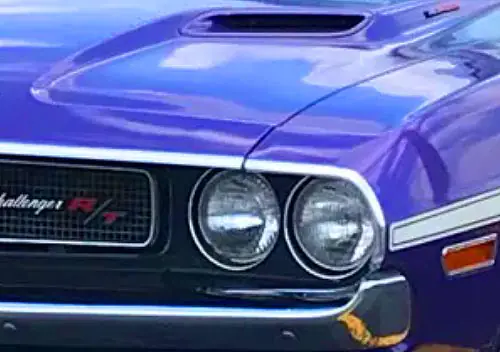


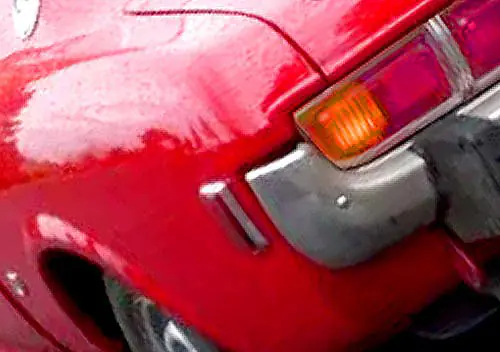

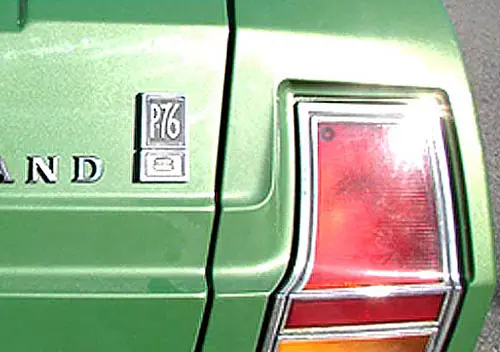
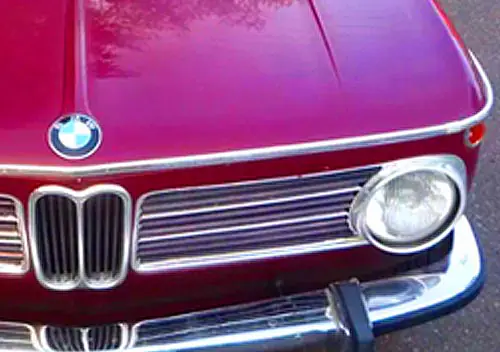

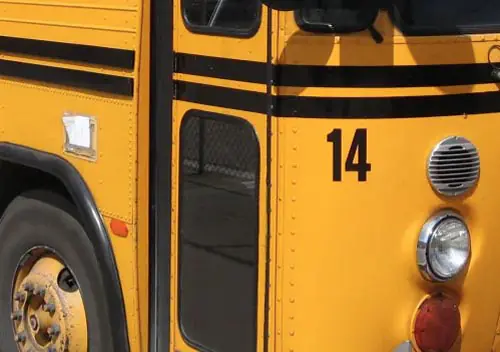
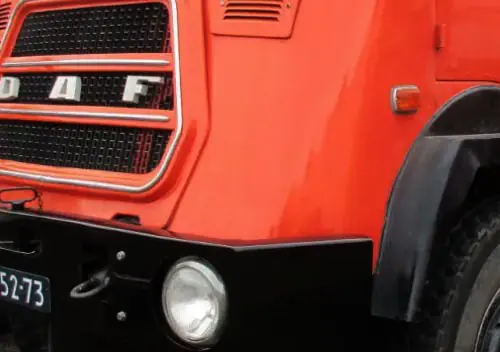
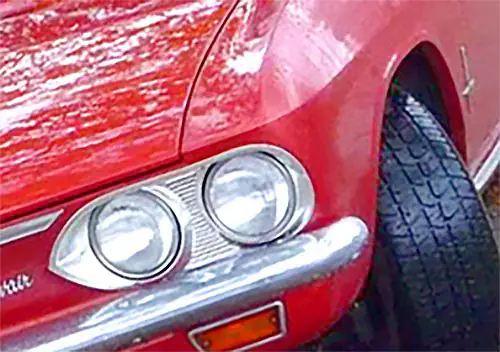
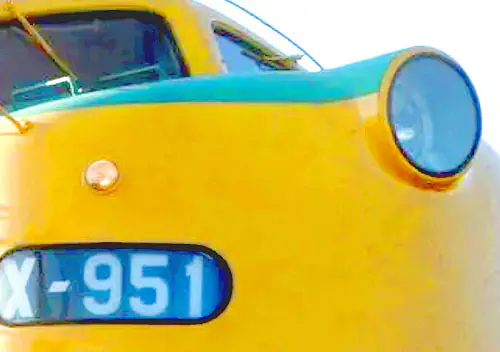
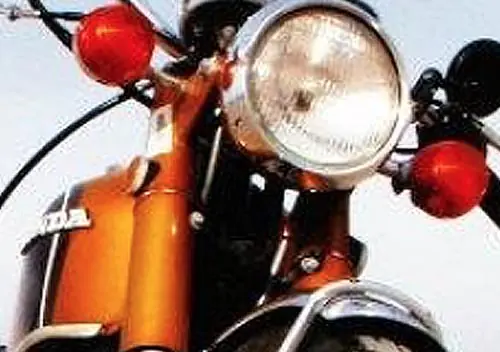
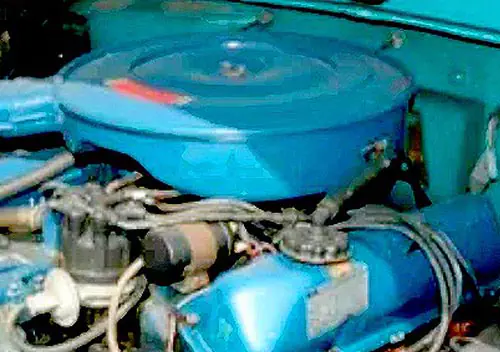
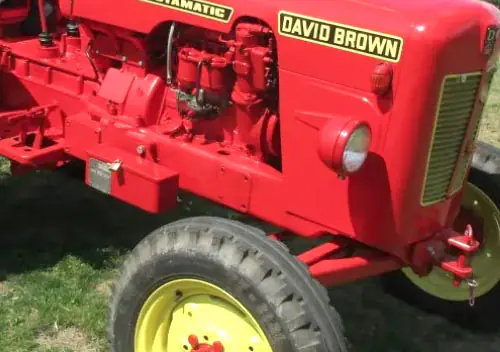
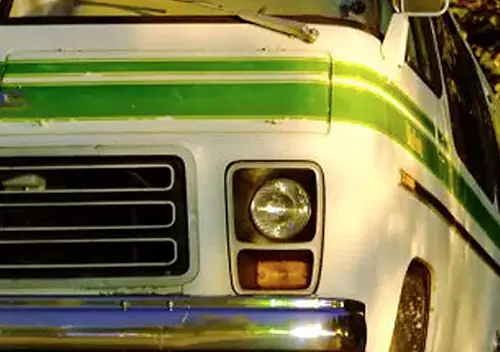

My parents had several Darts and Valiants, used and new, and all lasted with zero problems. My aunt followed their example and bought an Aspen. The suspension broke twice in the first year.
EXCUSE ME? While I agree we are STILL able to have our own opinions, I must take issue with your opinions of the 83-88 Fifth Avenues. I owned 83 and 85 Fifth Avenues and found them great automobiles. The Formal styling (especially roof), comfort, interior room and Luxury appointments were on par with other upscale vehicles I have owned, including Town Cars and RWD FLEETWOODS. I do agree with most of your opinions. But for some of us, the preferred mode of driving is on the GRAND scale. That being said, I’m on to VERSAILLES in my Town Car! 😉
“And quality improved markedly after the first year; within a couple of years it was back to A-body levels.”
True, we had ’68 and ’72 Darts as drivers for awhile, and in 1990 found a very low mile 1980 Aspen, Super 6 automatic. After I disconnected the TF lock-up it was actually an excellent car and had no rust, the body was much improved by then.
Have to take issue Rick W. Having had real Mopar luxury cars, the last 5th Ave was a joke, a gussied up Iaccoa-ized Aspen and mere pretender to the throne. I also had a ’69 LeBaron, ’75 Lincoln, ’75 DeVille, and several ’70s Olds 98s. The late and not great 5th was a not real luxury car, but an Aspare in drag. Mopar’s last was the R-body like my ’80 5th Ave, pictured. This was still a real luxury car in the classic US mode.
“The A-car was now a distant and painful memory, and contributed to the Pentastar’s collapse”. It think it is supposed to say that because the A-car was now a memory, the Pentastar was the lesser for it….or the Pentastar’s collapse was in part due to the A-car being axed.
Anyway…the improved quality of the F-car, after the first run of cars, seems to be a tightly held secret. The abominable quality and recalls of the first F-cars painted a broad brush impression that all of them were junk. To the extent that the F-cars are remembered at all, it is for their rusting out and recalls. First impressions do seem to stick.
The build quality was still subpar.
Consumer Reports tested an Aspen/Volare in 1978 and 1980, and noted that workmanship and quality control were bad even by Detroit standards of the time.
Yes, but in 1976 when the Aspen/Volare debuted, Consumer Reports thought very highly of them.
If I recall, there was the caveat that this was a new model with no reliability record.
However, the Dart/Valiant/Duster predecessors had a good reputation in this area.
As a kid, I don’t remember these cars being considered lemons. I do remember that the Consumer Reports slapped the new 1978 Omni/Horizon with a “Not Acceptable” label because the car careened out of control in a (rather moronic) CR test where the driver sharply turned the wheel and then took their hands of the wheel and the car would careen out of control.
Chrysler had the right idea with these, not nearly as bloated as a 4 door Cutlass or grotesque like a Ford Gran Torino. They were a good bit nicer/better trimmed than the Dart/Valiant, so repeat customers would seriously think about trading in their old basic steed. Sucks that they completely blew it, should have left the old cars in production for another year while they actually finished testing the new f bodies.
As for the Diplomat, 5th Ave etc I do like them a lot more than an ugly Fairmont. Or the Oldsmobile or Buick Seville 4 doors with non-rolling down windows. Still though the LeSabre and Olds 88 were better cars back in the 80s. Both in their old RWD guise or kinda ugly FWD late 80s models.
Replying to Randerson. To be clear, I was referring to the RWD 80s Fifth Avenues. When Iacoca went Loca with Kcars traditional Chrysler became a joke. The Executive Limo? Truly a stretch in more ways than size. A NOT so grand finale for New Yorker, Fifth Avenue, and Imperial. The once INCOMPARABLE Imperial sadly was incomparable in the worst way, I loved the previous big New Yorker and Fifth Avenue. Walter P. Must be spinning in his grave over the demise of his Empire. And PLEASE don’t say Stelantis!
I was indeed referring to the Lido treatment as applied to the Aspen/Volare to produce the small rwd 5th Ave: wheelbase 112.7 in, length 206 in and weight of 3600 lb does not a luxury car make, just because it has a bordello interior and cheesy half top applique. Of course he fwd later versions were certainly even worse!
It always sat funny with me that the F-bodies were so problematic, because there weren’t many mechanical or technological changes from the A-bodies. The engines and transmissions were almost 100% carried over from the A-bodies. The steering and suspension designs weren’t significantly different from those used in the Valiant/Dart. It should have been easy and the cars should have been good. But they weren’t.
Like they somehow went out of the way to make them “far from good”.
Yeah, it’s hard to figure exactly what Chrysler engineering had done to the F cars that made them so much worse than the A-body.
I’m going to guess it fell back to the similarity to what happened in 1957, i.e., the sheetmetal must have been much thinner to save costs, as well as assembly being indifferent, at best, which is really saying something since, overall, there wasn’t anything particularly sophisticated over the A-body.
“Yeah, it’s hard to figure exactly what Chrysler engineering had done to the F cars that made them so much worse than the A-body.”
According to a book written in the early 80s (Going For Broke) Chrysler was in such dire shape in 1974-75 that it laid off a large portion of the engineering staff. They kept on the guys working on emissions/safety mandates, but decimated staffing in other areas. This would include the team working on these cars in the last year or so before their launch.
I would imagine it was at the hands of Lynn Townsend that the engineering staff was dismissed and he knew exactly what it would mean for the F-bodies.
Coincidently, Lynn Townsend would retire at the end of 1975, right when the new F-bodies began arriving in showrooms. Towsend was replaced by the co-CEOs of Eugene Cafiero and John Riccardo, two guys that weren’t exactly on good terms with each other.
Was it a repeat of the Chrysler upper management chaos in the early sixties? No, but it was close, and the poor quality meant sales reflected it.
I’ve also read or heard that the laid off engineers/manufacturing staff meant of a lot of the pre-production work was done poorly or not at all.
I don’t know how well these ever sold in California but I’ll take a guess that it was poorly. They did arrive into the state as the state was going heavily to foreign makes with Accord showing up in 1976. They were a rare sight for me back in the day and stayed rare. I have been checking used cars for sale every week since 2000 and watched the disappearance of models over that time. Also noted other models that were never seen as I would search Ford, Dodge, Chrysler, and so forth. Never saw one and have noted that also K cars have disappeared since 2018 for sale and in the junk yards.
All I can recall about these late 70’s Chrysler/Plymouth and Dodge’s was that my brother who was a sheriff’s deputy had one for a squad. I don’t recall if it was a 77 or 78, but it was one of his first squads and it was terrible. Not sure if it had an inline 6 or a V8, but I recall him telling a story about how slow they were. In the county we lived, there was a 4 lane highway and it’s a very hilly area of NW Illinois. At one place, there’s a mile long hill and he did a little test once with it. He was doing 55 MPH at the bottom of the hill and as he started going up, he put the pedal to the floor and held it there. At the top of the mile long grade, he was doing 54 MPH. haha.
After those, it was the Dodge Diplomats and they liked those much more. Still not power houses, but much improved.
While poor quality control and recalls were probably the greatest contributors to the F-bodies demise, I sometimes wonder whether their size was an issue, too. They appeared to be too large relative to the Fairmont and the downsized GM A/G bodies and too big to offer a significant fuel economy advantage over their intermediate competition in 1976-77.
That said, the Aspen/Volare wagons were handsome, beautifully proportioned, and just the right size for a two-row family hauler. The F-body interiors were a major upgrade over the dated A-bodies, too, though not quite as nice as a loaded Granada or Monarch. The fact that they morphed into relatively reliable vehicles by 1980 points underscores the fundamental soundness of the design and engineering, as well
I worked at a dealership when they came out and they were absolute junk. 13 recalls got them better but never to the level of a dart or valiant
An ‘A’ to an ‘F’ indeed. My ’69 Dart Custom was one of the best cars I even owned. The Aspen/Volare suffered from poor quality control and some poorly engineered components that gave the cars a reputation they never recovered from. A lot of the corrosion issues were simply caused by not putting enough paint on the cars and ill-fitting body gaskets (truck lid and tail lights in particular, the trunks in these cars usually smelled like swamps). The 7.25″ rear axle, adequate in the lighter ‘A’ body, wasn’t up to the task in the heavier ‘F’ body, even behind the emaciated Slant 6. And as for the Slant 6, the new aluminum intake manifold, cleverly cast in two halfs (top and bottom) to facilitate a smooth inside runner finish was often pourus and full of slight vacuum leaks, which made the engine run too lean. The catalytic convertor was mounted right under the exhaust manifold which caused hot-soak driveability issues and exhaust manifold cracking. Toss in all the problems associated with early Lean-Burn systems many of these cars had and it’s a wonder they ran at all. The front suspension was another problem area. Again, a clever design poorly executed, the transverse torsion bar system these cars had was innovative in that every component was mounted to the subframe, including the upper control arms and the steering box. This facilitated assembly and was easy to isolate from the body, a problem in earlier Mopars with longitudinal torsion bars (the upper control arms and rear torsion bad mounts were attached directly to the body and transmitted NVH). The problems with transverse torsion bars included many wear-prone rubber bushings and weak subframes that would sag over time redering proper alignments impossible (Moog even made an offset upper control arm bushing to gain a little more adjustment). I also saw idler arms tear right out of the subframe on these cars. Yikes! Really a shame, I thought they looked nice. The ’75-’79 GM X body cars were better in every respect.
It is very unfortunate that Chrysler released the Aspen/Volare prematurely. A few more months of gestation would have probably solved all teething problems the F body had.
What is not mentioned in the article is how quickly the cars improved. By 1978 the quality problems were largely rectified. An old friend mine had deluxe Volare, with the same green interior of the car featured here. With its Super Six the car went really well. My friend used to lend it to me when I was visiting Canada.
I drove a 1978 Aspen Taxi Package which came with with the heavy duty inner fenders. Got it new and put 280,000 miles on it.
Needed a transmission as soon as the warranty expired. No other issues and looked like new when I passed it to the next guy.
This brings back memories of my driver’s ed school. The Christian school I attended didn’t offer this program, so my dad found a local school. Thankfully my friend Teresa was attending the same school at the same time!
To say they were on a tight budget would be the understatement of the year. It was 1978 and the choice of cars was a 1976 Nova, a 1974 Dart and a 1973 Maverick.
I wouldn’t drive the Maverick so it was the Nova once and the Dart two times.
I liked that Dart as it had gauges, and really drove well for a basic car. I still may buy one some day as a back up car. That dying dolphin starter would be worth it!
Self-inflicted wounds, not unlike GM’s Vega debacle of a few years before (Though GM had the market share to better absorb the blow).
I remember these as aggressively drab and derivative of their competitors, particularly the coupe which had an almost identical profile as the 75-79 Nova. In short, nothing to draw customers except brand loyalty and, once the fenders disintigrated, not even that.
I can’t think of the last time I saw one in the wild.
We had a 1976 Volare station wagon; it replaced the family’s 1963 Valiant. I learned to drive on the Volare. It was a tough, no-nonsense daily driver. An ongoing irritation for the Volare wagon was the flat piece of glass in the rear tailgate, which could (and did..a few times) shatter if you slammed the tailgate down too harshly. That, and the flimsy struts that lifted the tailgate would often snap out of their sockets, or break altogether. Eventually, opening the tailgate became a non-issue; the car simply became a 4-door sedan with an extra large storage area behind the back seat.
Years later I bought a Dodge Daytona (my 1st car) — and I was plagued with the exact same problem: The rear ‘hatch’ lift struts kept breaking and that damn back glass kept shattering whenever I shut it too carelessly. Chrysler Motors was terrible with fixing details like this.
A few observations….a good friend bought the Volare 3 months after they launched, said it was the next best thing yo sliced bread. His fenders didn’t rust out, but did have a new set of Mopar fenders on the wall of his garage for years. Think the issue there was when they had the engineering purge in the mid ’70’s, the steel spec was not finalized and went with pretty much plain steel (not galvanized). Moving fwd, worked at a Dodge dealer in the mid ’80s over a summer. A customer wanted a truck but wanted it thru this dealership. They went & swapped cars to get it. Unusual for that dealership to happily swap, as they were notorious for being a pain. Imagine the surprise when they got the the truck, upon inspection, was 6 different shades of the same medium copper color. Some massaging, buffing & resorting a bedside got it presentable….on a new truck. Much of my time was EPA kits for most anything in the last 4 yrs with the slant 6, adding a. spark delay & vacuum line rerouting, a busy summer.
In ’86, went to work at a Chrysler plant on the floor, at the tail end of the Omnis & Horizons…..1350 per day. Then the C/Y bodies til the mid ’90s. When the Neons launched, was a big leap in quality & automation…..but that’s another story….
The issue with the Asplare front fenders was that Chrysler opted not to install inner fender liners over the wheels, allowing rain/snow/salt to splash up directly onto the poorly-prepped and galvanized metal.
My dad still tells the story of a black 1976 Aspen station wagon on the showroom floor of Olsen Dodge in Omaha, NE. An oil leak marked its territory on the tile floor, and the rear hatch had noticeable air gaps around it. The roof had been welded on off-center, with both D-pillars bent to fit.
My ’79 Aspen wagon was my daily driver for 12 years abd now lives a pampered retirement showing 155k mikes in the clock the 225-2v run a,l Swiss watch a and keeps good company with Mt ’79 and ’80 Sportwagons.
Mixed feelings on these. One would have wanted them to succeed, and they were sort of handsome, but they fell far short of the mark in quality. I test drove one and was thoroughly unimpressed with the handling and the performance. Very underwhelming. They left you with the feeling that you would have if you went to a rent-a-car center and were offered one of these, and your reply would be, “Umm, do you have anything else – please?”
Being that their first year quality issues brought down their reputation so severely, reinforces the expression that the first impression is the one that lasts.
https://youtu.be/Y-twwTnMyxU?si=QJll6T2T-KB1MlkI
https://youtu.be/CU6wHxD-niE?si=cuC0AHfrdQpLjDRf
This channel has a number of old ads, but I’m always amazed at these couple ads for the Celica. In both the drivers are seen with broken down Aspen/Volare models & trading them in for a Toyota. Which of course is how many people came to buy their first Toyota & still buying them today. The A/V may have been better a few short years later, but I imagine many buyers didn’t trade in their 76 for a 78 (did they lease cars for that short a time back then)?
Whenever I think of the Valiant, I think of the 74-76. In the early 80s there was a crabby old woman who lived next to my grandparents. Between them and the community woods where all us neighbor kids played. She had one of those Valiants, likely supplied by her son who was a mechanic in town. One time she must have mixed up the pedals, and drove it though the garage door, through the back wall, and into the propane tank. My grandpa ran over there to shut the gas off. She didn’t get hurt. After that she got another Valiant almost the same. And put up a wire fence around the whole property. Good luck getting any help now. But she ended up in a home or something in the next couple years.
Later on, we were at a campground in the late 80s or early 90s. A nearby family had a beautiful 74-76 Valiant Brougham, black and shiny, no rust. Only time I’ve ever seen one that nice in the wild.
As for the Volare, I don’t remember anything good personally. My cousin had one for his first car in the late 80s. He couldn’t keep it running.
We had Volare’s for drivers ed at our high school! I remember the older teacher calling them Volvo’s! LOL!
“Probably the best thing Chrysler did with the Volare and Aspen was their names. By changing their body designation from “A” to “F”, and by not naming them Valiant and Dart, they at least avoided dragging those names through the mud. Now that sin would have been unforgivable.”
Still Chrysler Mexico did a big gamble by using the Dart monicker for the F-body for the Mexican market and later for the M-body and K-body variants.
https://www.curbsideclassic.com/blog/cc-cohort/cohort-pick-of-the-day-1989-dodge-dart-mexican-style/
https://www.curbsideclassic.com/cc-global/mexican-mopars-part-5-dodge-darts-of-the-1980s-not-darting-away-from-a-good-name/